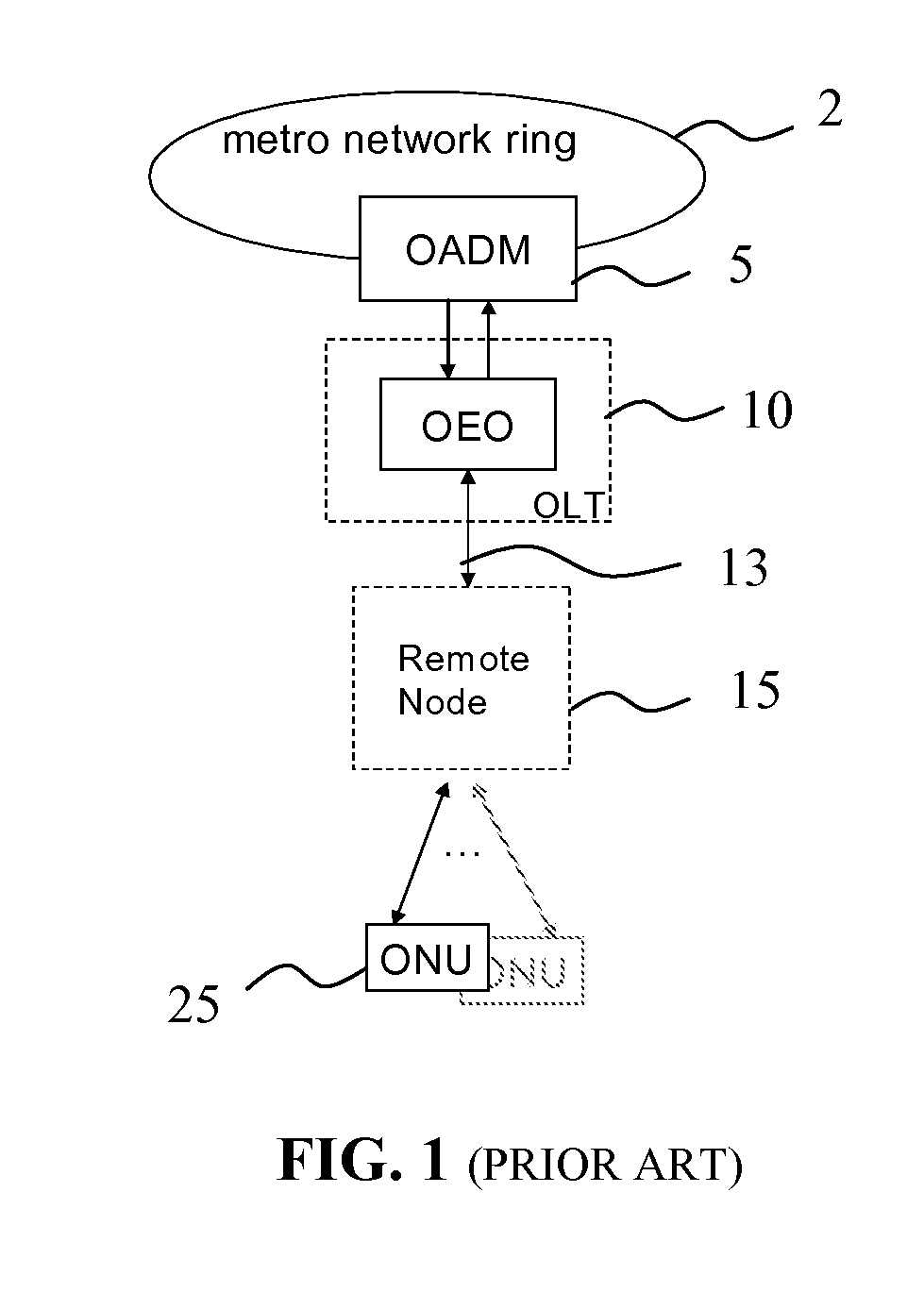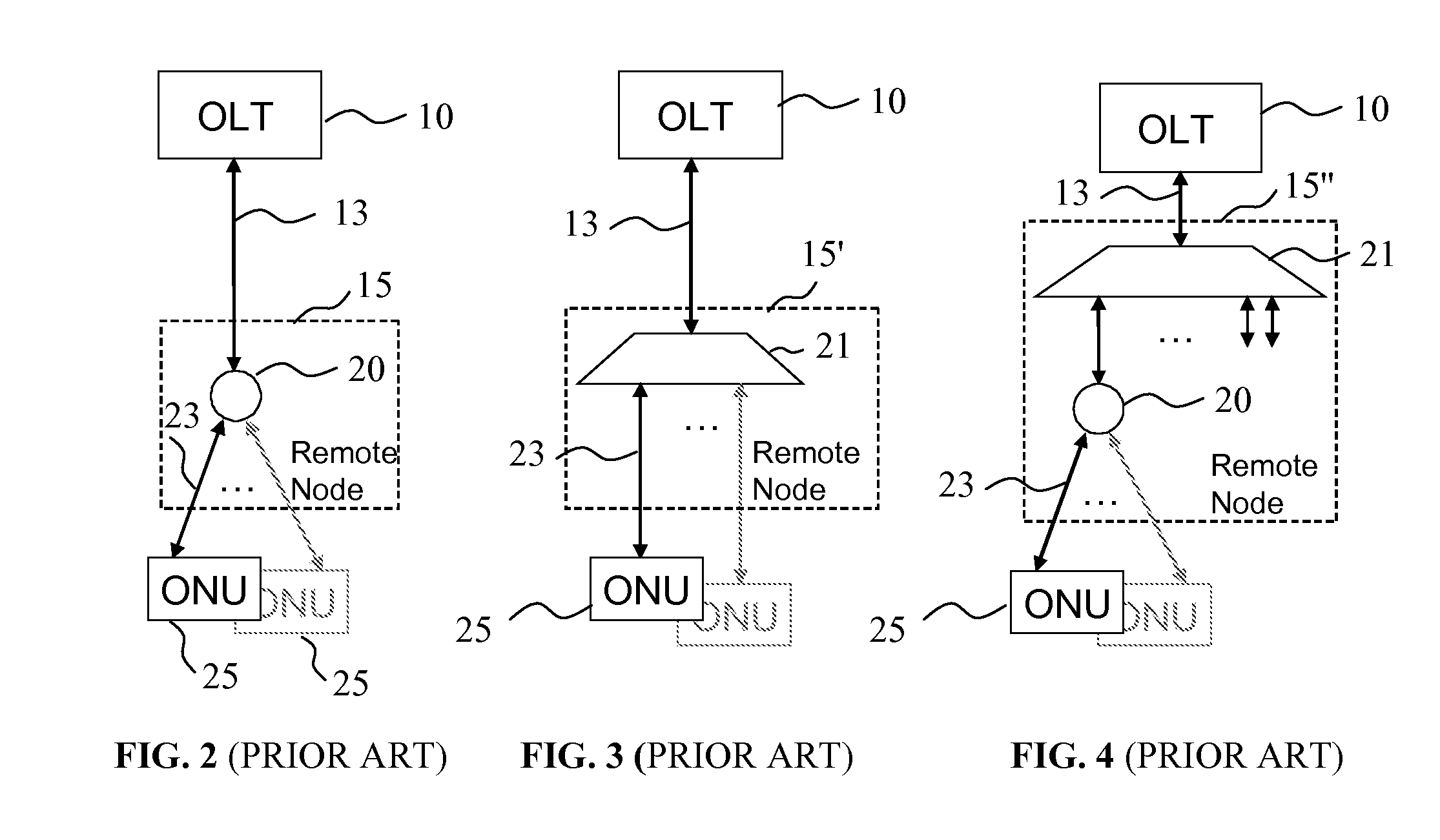Wavelength reconfigurable optical network
a technology of optical networks and reconfigurable optical networks, applied in the field of optical networks, can solve the problems of limiting the flexibility of wavelength assignment in the metro ring network, the possibility of wavelength reconfiguration and re-use, and the cost of current pon architectures
- Summary
- Abstract
- Description
- Claims
- Application Information
AI Technical Summary
Benefits of technology
Problems solved by technology
Method used
Image
Examples
numerical example
[0064]By way of example, the optical network of FIG. 5 has the following parameters: the length of optical fiber link between the metro hub 115 and the ROADM 120 is 10 km, the length of the trunk optical link 135 is 10 km, output power of the metro-hub transmitters is 5 dBm, output power of the ONU transmitters 3 dBm; insertion loss of optical devices in the wavelength path between the ONU transmitter / receiver and the metro hub transmitter / receiver: AWG 315—3 dB, circulator—1 dB, optical fiber loss—0.25 dB / km, ROADM—5 dB, optical splitter at the remote node 140—12 dB corresponding to 1×16 splitter, ONU optical coupler—3 dB, tunable filter—1 dB. This corresponds to a typical value of the overall optical loss associated with a wavelength path between the metro hub 115 and an ONU 150 of about 30 dB, so that the ONU transmitter and the ONU receiver each receive a downstream optical signal of about −25 dBm, while optical power of the upstream wavelength channel received by a metro hub re...
PUM
 Login to View More
Login to View More Abstract
Description
Claims
Application Information
 Login to View More
Login to View More - R&D
- Intellectual Property
- Life Sciences
- Materials
- Tech Scout
- Unparalleled Data Quality
- Higher Quality Content
- 60% Fewer Hallucinations
Browse by: Latest US Patents, China's latest patents, Technical Efficacy Thesaurus, Application Domain, Technology Topic, Popular Technical Reports.
© 2025 PatSnap. All rights reserved.Legal|Privacy policy|Modern Slavery Act Transparency Statement|Sitemap|About US| Contact US: help@patsnap.com



